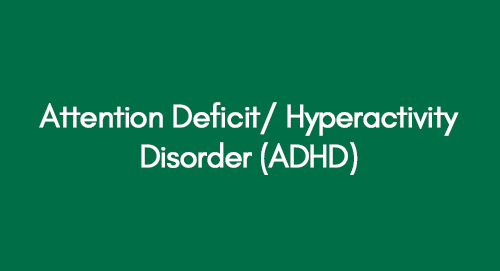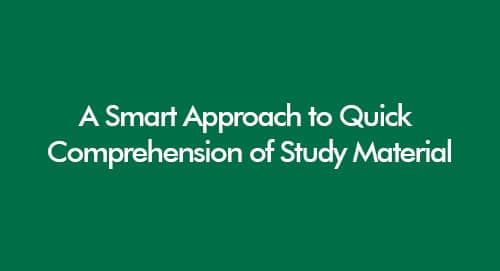
Assessing the Water Quality and Mineral Footprint in Tano River Basin Using Bio_Optics Modeling and Remote Sensing Techniques
July 12, 2022
Research Methodology
July 12, 2022In the intricate landscape of cognition, ADHD is a kaleidoscope of neurological dynamism, where the mind's exuberance dances on the edge of focus, inviting us to understand the vibrant spectrum of attention and hyperactivity within the mosaic of human experience.
In a society that frequently requires our full concentration, those with Attention Deficit/Hyperactivity Disorder (ADHD) encounter distinctive hurdles that extend across multiple facets of their lives. ADHD, a neurodevelopmental disorder, emerges in childhood and often endures into adulthood. This blog seeks to illuminate the intricacies of ADHD by delving into its symptoms, diagnosis, available treatment options, and the consequential impact it imposes on both individuals and their families.
Explore More About Attention Deficit/Hyperactivity Disorder (ADHD)
ADHD is characterized by persistent patterns of inattention, hyperactivity, and impulsivity, presenting challenges that necessitate a nuanced understanding. The diagnostic process involves a thorough examination encompassing medical history, behavioral observations, and collaborative input from educators, parents, or caregivers. Treatment avenues, such as behavioral therapy, medication, and educational support, aim to empower individuals with ADHD to navigate their daily lives successfully. By comprehending these complexities, we can foster a more informed and compassionate perspective, cultivating an environment that supports those grappling with ADHD and their families.
Introduction
When considering health, it's crucial to recognize the intricate connection between physical and mental well-being. Strict diets, medications, or treatments alone are insufficient without addressing an individual's emotional balance. In today's context, an increasing number of children and young individuals are being diagnosed with various mental illnesses, and Attention Deficit Hyperactivity Disorder (ADHD) stands out as a prevalent concern. Mental disorders, particularly ADHD, have a profound impact on a child's mental health, presenting challenges that extend from early years into adulthood. First identified in 1902 by British paediatrician George Still, ADHD persists in 50-80% of individuals from childhood to adulthood, affecting approximately 4-9% of children (Corral, Hernández).
ADHD, characterized by symptoms like inattention, hyperactivity, and impulsiveness, significantly affects an individual's mental health. It disrupts the ability to concentrate and manifests in hyperactive behaviour. The consequences of ADHD are far-reaching, encompassing poor academic performance, behavioural changes, sleep disturbances, and difficulties in managing relationships. Additionally, individuals with ADHD may grapple with depression and anxiety, leading to potential long-term challenges like unemployment and involvement in criminal activities.
Diagnosing ADHD poses challenges due to symptom overlap with other mental disorders such as anxiety, learning, dissociation, and behavioural disorders. The diagnostic process is multi-faceted, requiring individuals to undergo thorough assessments. ADHD's roots lie in biological characteristics related to brain development, a fact substantiated by numerous neurological studies categorizing it as a neurodevelopmental disorder. Recognizing the nuanced nature of ADHD and its impact on mental health is essential for developing effective strategies and interventions to support individuals navigating the complexities of this condition.
Neurobiological Basis of ADHD
ADHD, a complex neurodevelopmental disorder, is influenced by a myriad of factors, with a significant contribution from the neurobiological realm. Research by Xavier Castellanos revealed that individuals with ADHD often have brains with a volume 3% smaller than those of their non-ADHD counterparts. Neurobiologically, lower prefrontal cortex volume, responsible for attention, response, and social behaviour, has been noted in ADHD patients. Alterations in the corpus callosum, responsible for inter-hemispheric information transfer, and differences in the cerebellum, basal ganglia, and grey and white matter in frontal lobes further characterize the neurobiological basis of ADHD. These abnormalities, collectively termed Neurological Soft Signs (NSS), result from disruptions in the development of circuits and synaptic connections in the prefrontal cortex due to genetic mutations (Morga, 2019).
NSS, delicate manifestations of neurological abnormalities, are categorized into integrative sensory, motor coordination, and complex motor sequencing. Studies on children with ADHD reveal that NSS is associated with cognitive impairments, highlighting the importance of understanding these soft signs in diagnosing and managing the disorder (Pitzianti, 2017). Furthermore, if NSS persists into adolescence, it may lead to severe psychiatric disorders and abnormal brain development, emphasizing the critical role of these soft signs in the broader context of neurodevelopmental disorders (Agati et al., 2018).
Dopamine, a neurotransmitter influencing pleasure and reward responses, is found to be deficient in individuals with ADHD due to genetic factors. This deficiency contributes to the hyperactivity observed in ADHD patients (Ayaz, 2019). Additionally, a study reveals that symptoms of Sluggish Cognitive Tempo (SCT), characterized by daydreaming, physical weakness, and low self-esteem, are present in children with ADHD. SCT symptoms are associated with increased prefrontal cortex volumes, presenting a nuanced distinction within neurodevelopmental disorders (Sussman and Posner, 2018).
The hereditary nature of ADHD is evident, with genetic factors accounting for a 58-89% correlation among siblings. However, environmental influences, particularly during prenatal development, play a role in shaping ADHD symptoms. The risk factors during pregnancy, such as smoking and prematurity, can hinder cognitive development in the fetus, leading to ADHD symptoms in children (Eilerstan et al., 2019). Nevertheless, the precise association between prenatal risk factors and ADHD remains inconclusive, necessitating further research (Sciberras et al., 2017).
The impact of smoking, especially during adolescence, extends beyond physical health. Regular smoking is associated with a thinner front part of the cortex and abnormalities in grey matter, potentially contributing to ADHD symptoms. However, smoking alone may not be the sole factor responsible for ADHD development (Akkermans et al., 2017).
Understanding the lived experiences of individuals with ADHD is essential for comprehensive care. Interviews with parents and young individuals diagnosed with ADHD shed light on their challenges, perceptions, and coping mechanisms. These narratives emphasize the psychological toll of feeling unworthy and isolated, prompting efforts to identify symptoms, modify environments, and gain self-control as coping strategies (Ghosh et al., 2016; Ringer and Cerniglia et al., 2019).
In conclusion, ADHD's intricate web involves neurobiological, genetic, and environmental factors, each contributing to the multifaceted nature of this neurodevelopmental disorder. Exploring these dimensions is crucial for advancing our understanding and approaches to supporting individuals with ADHD.
Identification of Symptoms
ADHD diagnoses are frequently made among primary-school children aged 3 to 7 years, where challenges in concentration, sitting still, and appropriate behaviour become apparent. Teachers often report disruptive behaviour, and peers may avoid interacting with hyperactive children. Diagnosing ADHD involves a comprehensive process, incorporating various assessments such as parental opinions, observations, and behaviour ratings. Interviews are conducted with children, teachers, and parents or guardians to gather insights into the child's behaviour and social interactions. Various activities are administered to observe the child's performance and behaviour directly.
Several rating scales, including the Child Behavior Checklist (CBCL), Strengths and Difficulties Questionnaire (SDQ), a home version rating scale of ADHD, and the Conners Rating Scale, are employed to assess and quantify behavioural patterns. Interviews are crucial in pinpointing problematic behaviours and understanding the child's social associations. Conversations with teachers and parents aid in identifying behavioural issues and exploring potential mitigating factors. Direct observations are conducted at home and school to assess the child's behaviour and interactions with friends and teachers. These observations facilitate the differentiation between hyperactive and non-hyperactive children.
Activities designed for observation include small assessments, such as matching similar figures, where a picture is presented above various options to prompt quick responses from the children. This direct assessment method allows for a more accurate understanding of the child's cognitive and behavioural responses, aiding in the comprehensive evaluation of ADHD.
Treatment of ADHD
Treatment for Attention Deficit/Hyperactivity Disorder (ADHD) commonly employs medications and psychological interventions to enhance cognitive behaviour. Central to the success of ADHD treatment is parental support, where acceptance of the situation and readiness to confront challenges are pivotal. Pharmacotherapy primarily utilizes stimulant medications like Methylphenidate-based drugs (e.g., Ritalin, Concerta, Focalin, Metadata, Daytrana) and amphetamine-based medications (e.g., Adderall, Dexedrine, Vyvanse). These medications aim to address the deficiency of dopamine and norepinephrine, key neurotransmitters associated with ADHD symptoms and have shown effectiveness in treating adult individuals with ADHD.
In addition to medication, various psychological interventions contribute significantly to ADHD management. Parental counselling, often facilitated through parent-child interaction videos, enhances children's understanding and attention abilities. The focus is helping children respond effectively to their environment and learn behaviour management in public settings. Behaviour therapy extends its impact beyond the child by training teachers, guardians, and parents in effective behaviour management techniques. This approach utilizes a reward system wherein positive behaviour is acknowledged and rewarded, motivating children to improve their conduct.
Environmental manipulations offer additional avenues for ADHD treatment. Modifying the child's environment aims to create a more comfortable setting. In schools, changes may include adjusting seating arrangements and reducing the duration of periods, allowing children to develop their attention spans gradually. Positive reinforcement, such as praise, gifts, and incentives, is a motivational tool for improving behaviour. Specific strategies, like providing instructions in note-taking form, minimizing homework load, and assisting in completing tasks, are employed to support children in the classroom. At home, controlled playtime with limited friends and toys is encouraged.
Cognitive Behavioral Therapy (CBT) is another impactful approach to helping children manage their behaviour. Conducted individually or in groups based on the child's specific needs, CBT focuses on identifying and addressing the child's issues and responses to various situations. The therapist collaborates with the child to improve behaviour in diverse contexts, fostering positive changes in their overall well-being. This multifaceted treatment approach emphasizes a holistic strategy, considering both medication and psychological interventions to optimize the management of ADHD symptoms.
Conclusion
Attention Deficit Hyperactivity Disorder (ADHD) is a mental disorder prevalent in children that often persists into adulthood, adversely impacting mental health by inducing hyperactivity and impairing attention. Diagnosing ADHD is challenging due to symptom overlap with various other mental disorders such as anxiety, learning disorders, dissociation disorders, and behavioural disorders. The diagnostic process involves multiple phases, requiring interviews with children, teachers, parents, or guardians.
To assess behaviour directly, various activities are administered, and rating scales like the Child Behavior Checklist (CBCL), Strengths and Difficulties Questionnaire (SDQ), a home version rating scale of ADHD, and the Conners Rating Scale are utilized. The complex nature of ADHD necessitates a comprehensive treatment approach. Common modes include medications and psychological programs targeting cognitive behaviour improvement.
Integral to successful ADHD treatment is parental support, involving acceptance of the situation and preparation to confront challenges. Pharmacotherapy, primarily using stimulant medications to address dopamine deficiency, exhibits significant efficacy, especially in adult ADHD cases.
Beyond medication, alternative treatment options encompass counselling for parents, parenting tools, school-based environmental modifications, and Cognitive Behavioral Therapy (CBT). Parental counselling often utilizes videos of parent-child interactions to enhance understanding and coping strategies. Behaviour therapy involves training individuals associated with the child, employing a reward system to reinforce positive behaviour.
Environmental manipulations focus on modifying the child's surroundings for comfort and effective learning. In schools, alterations like seating arrangements and reduced period durations are implemented. Positive reinforcement, such as praise and incentives, motivates behavioural improvement. CBT, conducted individually or in groups, aids in managing behaviour by identifying and addressing issues.
Understanding the personal experiences of individuals with ADHD is essential. A study involving interviews with fourteen young people revealed feelings of unworthiness and isolation. Coping strategies included identifying symptoms, attempting to change the environment, and exerting self-control.
In conclusion, ADHD's complex nature demands a multifaceted approach to diagnosis and treatment. Activities, interviews, and rating scales contribute to accurate diagnosis. At the same time, a combination of medications, psychological programs, parental support, and environmental modifications forms a holistic treatment strategy for better outcomes in managing ADHD.
Get 3+ Free Dissertation Topics within 24 hours?



























